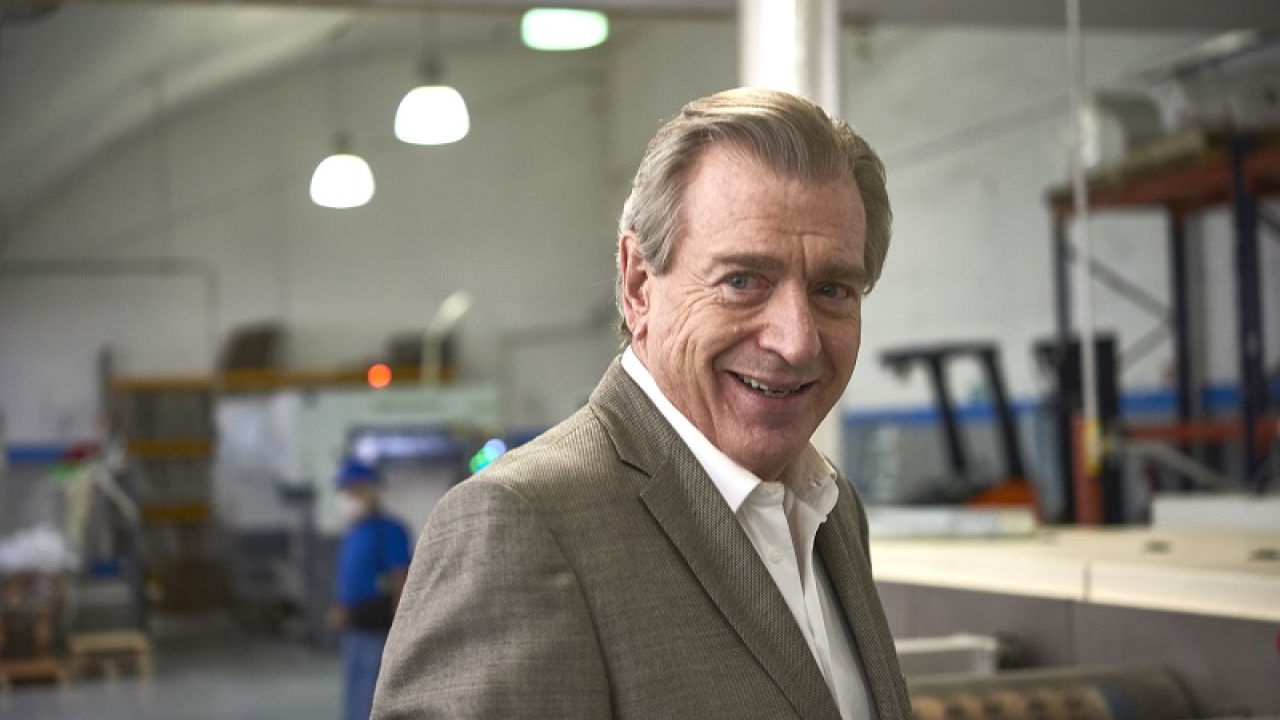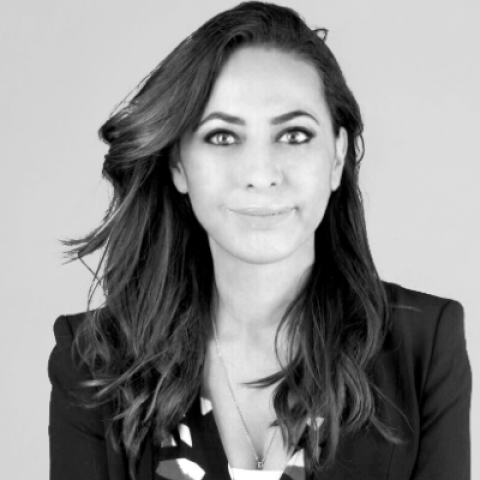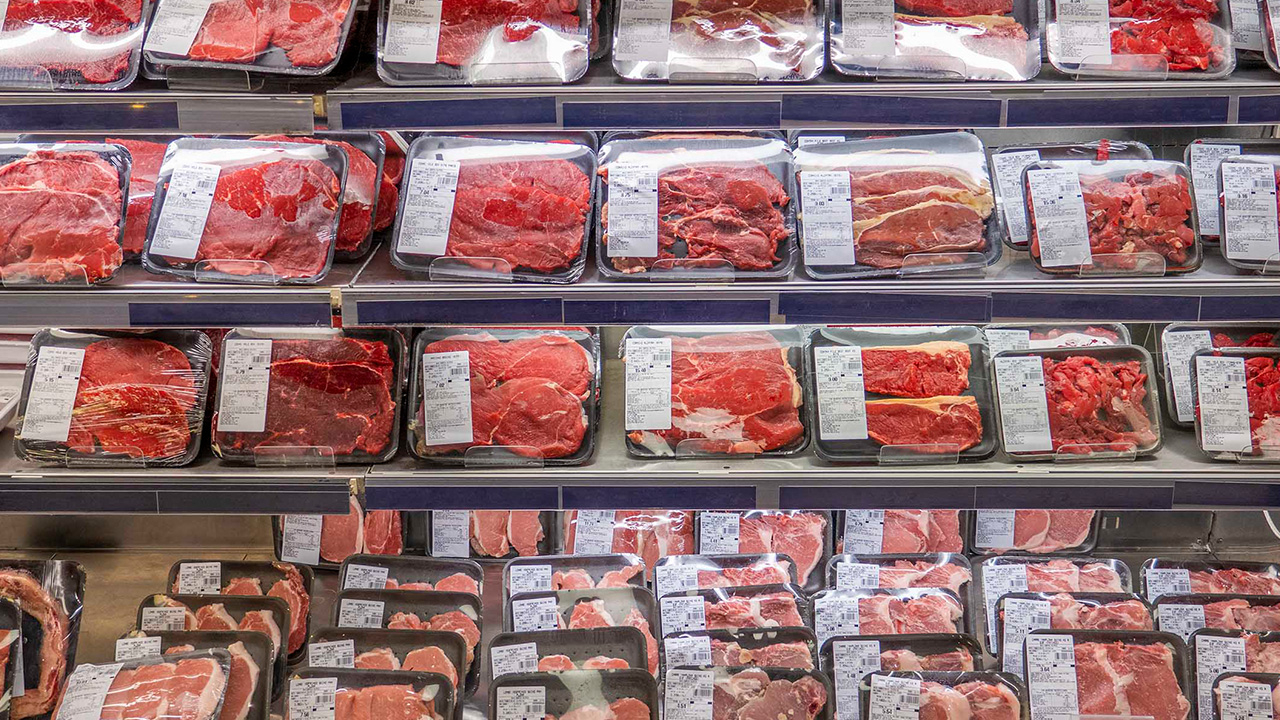Mexico’s graphic arts personality of the year

Label Pack pleasantly surprised me with this recognition. At the moment I received the award, I thought that this prize does not belong to me alone, but to all my staff and to the company that I am fortunate to direct. It is also the result of the principles that govern the group to which I belong, with which I was formed. It is a great honor to be able to lead a great team of collaborators and to share this achievement with them.
My story begins as a 14-year-old office boy at a small advertising agency in Polanco [a neighborhood in Mexico City]. I had knocked on their door and asked if they needed a messenger for the summer; I think they liked me. At first I helped in the offices and made trips to the bank. But as soon as I had the opportunity, I got myself into the art department to learn what they were doing. After a few weeks, I began to help the designer with his work. That’s how my love for graphic arts developed.
I had always liked art, but I had no knowledge. I learned simply by seeing and helping. As a result of this work, I decided to enroll at the same time at an art and creative direction course at high school. Aged 17 I got a job at a ‘magazine for gentlemen’ – a nude magazine – which I designed and laid out.
Unfortunately, everything ended when my family discovered where I worked. They knew I worked on a magazine, but they didn’t know what type. It was then that I opened my first design office and began to work for other clients, though I continued designing and putting together the magazine without my parents knowing. At the same time, I started studying industrial design. When I turned 18 and could legally set up a company, I founded DIA Diseño y Asociados, which years later became one of the biggest design offices in Mexico, Diseñadores Industriales Asociados.
Beginning to print
The design office was growing while we started printing silkscreen to produce invitations, promotional posters, self-adhesives and other work. But in the constant search to integrate even more, we decided to enter the world of offset. So we divided the company into two: Diseñadores Industriales Asociados (DIA) and Centro de Producción Gráfica (CPG).
To begin with, we bought a Gestetner model 202 offset machine, and rented a commercial space around the corner from the office to install the workshop. We bought our first machine from Ricardo del Castillo, when he started his business selling used machinery. We didn’t know each other, but since then he has become a great friend and we continued to buy machinery from him until we had four Davidson 500 machines, a Solna 124, the screen-printing workshop and a complete photolithography system, which allowed us to begin doing both design and print projects.
By then, I was 30 years old. There was a lot of growth in the economy and we were seeing a boom in the stock market. Although most of my friends and family were in the financial sector and doing very well, I never wanted to invest in the stock market. I invested all the money I could into the business in order to buy more machinery. I have always preferred hardware to money, because I believe that money is a consequence of work and not the beginning of it.
By now there were more than 120 employees at DIA and CPG. We could compete for projects with top-level companies. That is when we decided to specialize in the production of agendas under the Actuel brand. We were the market leaders – by far – since there were few manufacturers with our degree of integration, from the conceptualization of the design to the personalization of the product for each client. Unfortunately, with the arrival of desktop organizers and electronic agendas of the time, such as the Palm, the use of printed agendas was changing. We lived through a stressful time, and had to sell all the company’s equipment. At that time I was invited to work at LitoPlas, which was being founded, to dedicate myself to the printing of conventional labels on paper.
At LitoPlas, we started to print in offset with Heidelberg equipment, after which we moved into flexo with an Aquaflex machine. In 2002, the use of shrink sleeves in the packaging of food products became a strong trend in the market. After attending various conferences and machinery exhibitions, we bought from Stephan Deuster of Intergáfica, now KBA – another great industry friend – our first 8-color Nilpeter UV flexo press. We quickly bought two more 8-color presses, of narrow and mid web, and a 7-color. At the same time, we continued to grow in offset printing of conventional labels, again with wide-format Heidelberg machines of five and six colors. We then moved into solvent-based wide-web flexo for flexible packaging production, and later expanded into folding carton.
For this latter move, we used a 6-color KBA machine – which could switch between conventional and UV – with die-cutting and gluing equipment from Brausse, varnish, hot stamping and other options. These techniques led us to specialize in premium packaging, creating laminated folding packaging on micro-corrugated cartonboard, boxes and tubes lined with rigid carton, as well as small boxes and tubes on rigid PVC films.
We are passionate about doing different things in our industry, offering innovative and high quality options to our clients, and entering into new packaging trends that distinguish us from the competition – simply removing ourselves from the conventional.
At all times we ask ourselves how we can strive more in our daily activity, how we can provide a better service, what new solutions we can use to contribute to the market, and what benefits we can bring to our partners and the community.
Philosophy in the face of adversity
There are times that are more challenging than others. When I have a bad day, I go to sleep and wake up early with the intention of starting again. Problems never end and I recognize that the solution depends on the attitude we have when facing them. On one occasion, Enrique Hernández-Pons – an important and beloved friend – shared advice which has been highly formative for my career: ‘Always do what you have to do, but come out with your head held high.’ That is precisely what I always try to do.
I believe that in life you have to have well-established principles and values. This is an area where I fully identify with Grupo Herdez, of which Litoplas is a part. In this great group I have learned that every impresario must have essential qualities, such as knowing how to reinvent yourself all the time, to adapt to the client’s needs, to understand that you don’t sell quality because quality is a given, to be trustworthy at all times. You must challenge yourself and take risks every day. And above all, believe in your people, because they are the ones who make you grow.
One of our greatest challenges has to do with human capital – previous generations remained in a job for much longer. Today it is harder to retain talent. Healthy control of finances is also an important challenge, because if there is no discipline in the use of resources, there is no development. And let’s not forget, the only constant is change.
I am currently in charge of LitoPlas, a great company that has filled me with challenges, satisfactions and achievements for more than 25 years. For me, the future is based on continuing to expand and consolidate the company’s operations.
This year we are going to install three new machines, including a new 5-color KBA offset press, which will increase our capacity. Many challenges are on their way, as all our investments last year will be consolidated in 2018.
I am part of a company that has always valued good relationships with its suppliers and business partners, considering them crucial in its growth, development and innovation. Without a doubt, they have been the foundation that has consolidated our value chain, sharing a culture sustained in a healthy and long coexistence, characterized by mutually beneficial growth.
We all support openness, ethics, transparency and collaboration for the benefit of our clients. For this reason, I express my sincere gratitude to the important group of suppliers and friends who have granted me this recognition, which is undoubtedly the result of the correspondence, love and vocation that we together imprint on this extraordinary industry.
This opinion article was first published in Labels & Labeling issue 4, 2018
Stay up to date
Subscribe to the free Label News newsletter and receive the latest content every week. We'll never share your email address.


